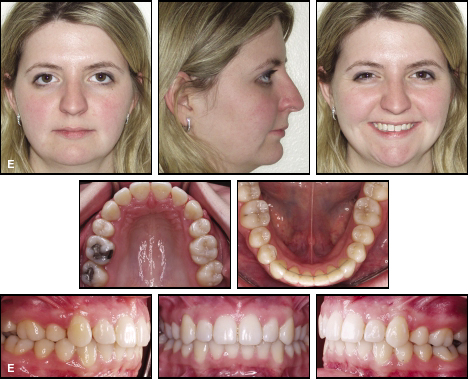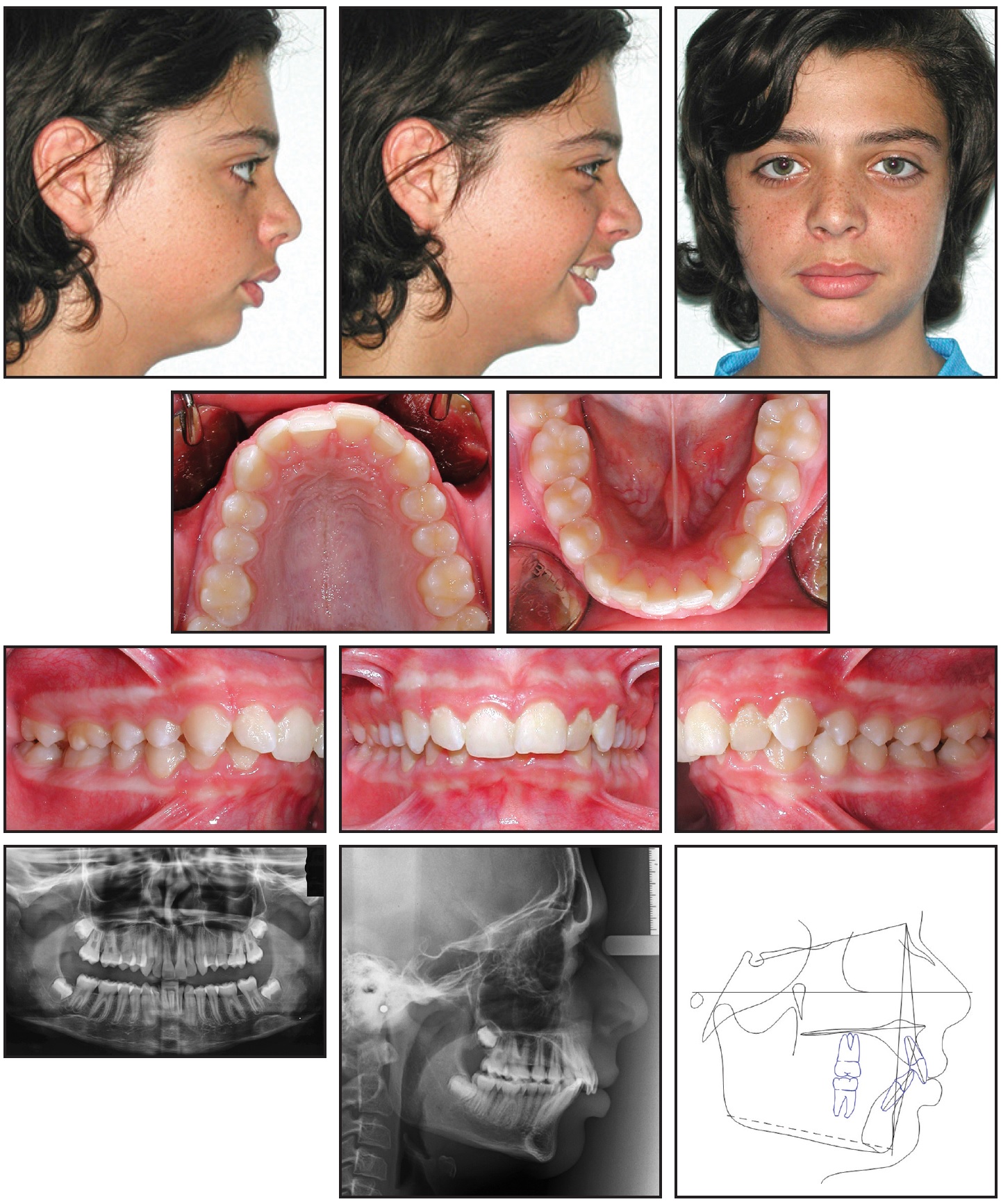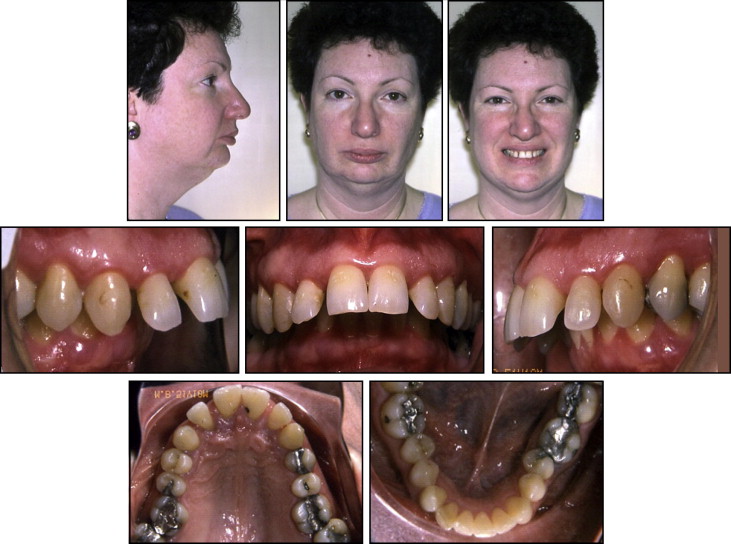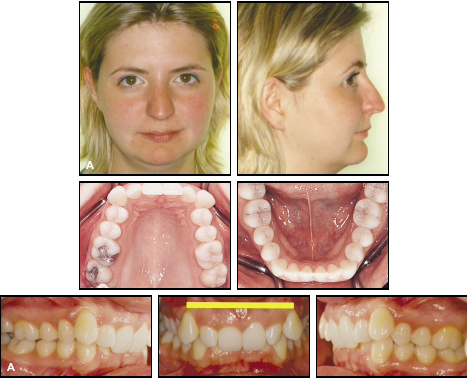class ii malocclusion treatment adults
This may be an incisor tooth at the front of the mouth causing a cross-bite. For adults with more severe malocclusion orthognathic surgery is an option Orthognathic surgery at Clinique MFML It is important to treat class 2 malocclusions promptly in order to limit their adverse effects.

Treatment Of A Severe Class Ii Division 1 Malocclusion Combined With Surgical Miniscrew Anchorage American Journal Of Orthodontics And Dentofacial Orthopedics
Early treatment costs more money in reference to a two-phase treatment to correct Class II malocclusion.

. On the other hand in adult patients with severe Class II malocclusions generally involving extremely deficient mandibles orthognathic surgery is often the only possible treatment. When it comes to a growing patient functional appliances are the optimal way to achieve growth modification by enhancing mandibular growth. The majority of treatment modalities such as functional appliances are directed at stopping or redirecting maxillary growth and simultaneously stimulating mandibular growth1-3 on the other hand.
Relieve crowding and level and align the arches. Several treatment options are available for correction of class II div 2 cases depending on the growth and severity of the skeletal jaw base discrepancy in. Aims of Treatment 1.
The main goal of treatment by orthodontic camouflage is to mask the marked skeletal discrepancy by dental compensations. Treatment of skeletal class II malocclusion in adults. Ideally treatment of Class II malocclusions should focus first on improving the skeletal discrepancy using functional appliances while the individual is still growing.
In this case presentation an adult female patient with Class II division 2 subdivision malocclusion was treated by means of unilateral FRD appliance in conjunction. Nonsurgical treatment of an adult with a skeletal Class II Division 1 malocclusion and a severe overjet This case report describes the treatment of an adult patient who had a Class II Division 1 malocclusion with a severe overjet 135 mm a deep overbite 7 mm 100 and spacing between the maxillary anterior teeth. Class II malocclusions are of interest to the practicing orthodontists since they constitute a significant percentage of the cases they treat.
Camouflage the skeletal pattern with fixed appliances. Achieve Class І incisors canines and full unit Class II molars. Although camouflage may be attempted by extracting premolars the soft-tissue objectives may be impossible to meet.
To evaluate anchorage control using miniscrews vs an Essix appliance in treatment of Class II malocclusion by distalization using the Carrière Motion Appliance CMA. The treatment of Class II malocclusion due to mandibular retrognathia is one of the most common challenges met in orthodontic practice. However one or more teeth have erupted in a position that is leading to a problem.
These cases tend to have a good long-term prognosis without treatment. Correction of the Class II. Class 2 Malocclusion Treatment Procedures Based on the cause of the malocclusion the orthodontist will propose one of the following procedures.
Clear aligners have been part of the orthodontic treatment for several. 20 patients whose overjet was reduced by camouflage following premolar extraction 20 patients whose occlusions were corrected by placement of a fixed functional orthopedic appliance and 20 who underwent orthognathic surgery bilateral sagittal. The similarity in treatment time between these complete Class II malocclusion treatment protocols in conjunction with previous reports Janson et al 2006 2007 shows that treatment protocol plays a primary role in determining treatment time rather than the number of extractions in Class II malocclusion subjects.
The best treatment modalities for class II malocclusion in growing patients include using functional appliances either removable Activator Bionator Frankel and Twinblock or fixed appliances MARA cemented Twinblock or Herbst appliance that mostly enhance further mandibular growth via mandibular advancement and also headgear Cervical Highpull and. 1 However dentoalveolar compensations reducing overjet and the severity of the Class II malocclusion are still the major effect of functional appliances. In these patients their jaws are the normal shape and length.
Reduce overbite and the overjet. Among orthodontic treatments proposed for correcting Class II malocclusion in adult patients the protocol with dentoalveolar compensation stands out. Using fixed orthodontics to change the position of teeth Using removable orthodontics to change the position of jaws Extracting one or more teeth to cure the severe teeth crowding.
Herbst appliance therapy can be considered a modality for the correction of skeletal Class II malocclusions in mature patients and should be added to orthodontias armamentarium. Early treatment phase 1 as part of a two-phase treatment to correct Class II malocclusion is rarely indicated as it is not effective and incurs greater cost than one course of treatment with fixed appliances provided when the child is in adolescence. The therapy to be applied is related to the severity of the sagittal error and also to the facial disharmony both identified by patient and orthodontist.
Stepwise vs single-step advancement with the Herbst appliance. Treatment Plan The treatment of the patient was executed in the following order. Adult patients with severe Class II malocclusion may be treated by camouflage or a combination of orthodontic and orthognathic surgeries depending on the severity of malocclusion 9.
Treatment of asymmetric malocclusions is more intricate than symmetrical cases. 23 In adults repositioning of the maxilla and. Severe Class II deep bite malocclusion treated with headgear and braces After Severe Class II deep bite malocclusion treated with braces and orthognathic surgery to advance lower jaw Before After Facial changes with the above treatment plan Before After Severe Class II treated without extractions using pendulum appliance prior to braces.
Our study cohort consisted of 60 young adults presenting a skeletal Class II Division 1 malocclusion. Individual rotated teeth class 1 malocclusion. In individuals with normal occlusion and skeletal relationship the amount of maxillary and mandibular growth is synchronized and the result is a well-balanced and esthetically pleasing profile.
This malocclusion is one of the most common in orthodontic practice and its correction always seeking for the maximum efficiency can be achieved by several treatment protocols such as 2 or 4 premolars extraction maxillary molars distalization fixed functional appliances and intermaxillary elastics which can be particularly interesting in Class II subdivision cases.

Nonsurgical Treatment Of Severe Class Ii Malocclusion With Anterior Open Bite Using Mini Implants And Maxillary Lateral Incisor And Mandibular First Molar Extractions American Journal Of Orthodontics And Dentofacial Orthopedics

Class Ii Treatment Photos Orthodontics Cary Nc Clayton Nc

Advances In Management Of Class Ii Malocclusions Intechopen

Treatment Of Class Ii Division 2 Malocclusion In Adults Biomechanical Considerations Jco Online Journal Of Clinical Orthodontics

Advances In Management Of Class Ii Malocclusions Intechopen

Treatment Of Class Ii Malocclusion With Tooth Movement Through The Maxillary Sinus American Journal Of Orthodontics And Dentofacial Orthopedics

Functional Class Ii Treatment With A Miniplate Anchored Herbst Appliance Jco Online Journal Of Clinical Orthodontics

Nonsurgical Treatment Of An Adult With A Skeletal Class Ii Division 1 Malocclusion And A Severe Overjet Pocket Dentistry

Class Ii Treatment Photos Orthodontics Cary Nc Clayton Nc

Treatment Of Class Ii Malocclusion With A Customized Lingual Appliance Combined With A Class Ii Corrector American Journal Of Orthodontics And Dentofacial Orthopedics

Treatment Of Severe Class Ii Division 1 Deep Overbite Malocclusion Without Extractions In An Adult American Journal Of Orthodontics And Dentofacial Orthopedics

Figure 1 From Treatment Of A Young Adult Patient With Class Ii Division 2 Malocclusion By Using Forsus Fatigue Resistant Device 2 Years Follow Up Semantic Scholar

Is Traditional Treatment A Good Option For An Adult With A Class Ii Deepbite Malocclusion American Journal Of Orthodontics And Dentofacial Orthopedics

Pdf Treatment Of Class Ii Division 2 Malocclusion With Miniscrew Supported En Masse Retraction Is Deepbite Really An Obstacle For Extraction Treatment Semantic Scholar

Treatment Of A Class Ii Division 1 Malocclusion With The Combination Of A Myofunctional Trainer And Fixed Appliances American Journal Of Orthodontics And Dentofacial Orthopedics

Management Of Skeletal Class Ii Malocclusion By Surgery First Approach A Short Term Clinical Experience Semantic Scholar

Class Ii Treatment Photos Orthodontics Cary Nc Clayton Nc

Treatment Of Class Ii Division 2 Malocclusion In Adults Biomechanical Considerations Jco Online Journal Of Clinical Orthodontics